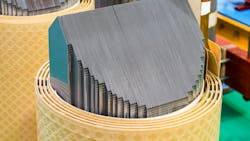Transformer Shortage: DOE Funding R&D for Flexible Innovative Transformers
Supply chain issues, new construction and demand outpacing manufacturing capacity are several factors behind the shortage of electrical transformers, a critical power grid component.
The Department of Energy is placing a bet on more advanced transformer designs that it hopes will alleviate the long lead times for new transformers, which many in the industry say are hampering outage restoration, renewable energy projects and power grid upgrades.
See previous T&D World coverage of the transformer shortage here.
Up to nine participants can draw from an $18 million funding opportunity for developing, testing and piloting new “flexible innovative transformer technologies,” according to a release from the DOE.
Last year, utilities told T&D World that the shortage has caused lead times in excess of three years in some cases. The impact is felt by utilities all over North America.
DOE’s funding is intended to boost development of new transformer designs with a wide range of transmission and distribution uses.
“More flexible and adaptable grid components will increase grid resilience at lower cost and reduce supply chain challenges facing the utility sector,” said Gene Rodrigues, Assistant Secretary for Electricity.
Transformers are critical power grid components as they step up or step down voltage as power is transmitted across the power grid. Transformer manufacturers say labor shortages, hard-to-source materials and worldwide shipping delays are among the culprits for the supply shortage.
The funding opportunity will be co-funded by the DOE Office of Electricity as well as the Office of Cybersecurity, Energy Security, and Emergency Response.
The two areas of interest named by the DOE are to research and develop advanced distribution transformers (flexible, modular, scalable, hybrid or solid state) as well as to demonstrate activities for advanced distribution transformers across a range of transmission-scale duties.
DOE said it expects to announce the selectees in late summer.
About the Author
Jeff Postelwait
Managing Editor
Jeff Postelwait is a writer and editor with a background in newspapers and online editing who has been writing about the electric utility industry since 2008. Jeff is senior editor for T&D World magazine and sits on the advisory board of the T&D World Conference and Exhibition. Utility Products, Power Engineering, Powergrid International and Electric Light & Power are some of the other publications in which Jeff's work has been featured. Jeff received his degree in journalism news editing from Oklahoma State University and currently operates out of Oregon.
